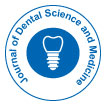The Science of Cavities: Understanding Causes, Consequences, and Prevention
Received Date: Jan 02, 2024 / Published Date: Jan 29, 2024
Abstract
Dental caries, commonly known as tooth decay or cavities, remains a prevalent oral health concern globally. This multifactorial disease results from the interaction of various factors including bacteria, diet, host susceptibility, and oral hygiene practices. The demineralization of tooth enamel due to acid produced by bacterial fermentation of dietary carbohydrates is a primary mechanism leading to caries formation. Despite advancements in preventive strategies such as fluoride use and dental sealants, dental caries continues to affect individuals of all ages, leading to pain, functional impairment, and significant healthcare costs. Understanding the etiology, risk factors, and preventive measures associated with dental caries is essential for effective management and public health interventions. This paper provides an overview of the current understanding of dental caries, highlighting its epidemiology, etiology, risk factors, preventive strategies, and treatment modalities.
Dental caries, commonly known as tooth decay, remains one of the most prevalent chronic diseases worldwide, affecting individuals of all ages and socio-economic backgrounds. This multifactorial disease involves the demineralization of tooth structure primarily caused by acid-producing bacteria in dental plaque. Despite advancements in preventive strategies and treatment modalities, dental caries continues to pose significant challenges to global public health. This abstract provides an overview of the etiology, epidemiology, risk factors, clinical manifestations, and current approaches to prevention and management of dental caries.
Citation: Antonio A (2024) The Science of Cavities: Understanding Causes,Consequences, and Prevention. J Dent Sci Med 7: 226.
Copyright: © 2024 Antonio A. This is an open-access article distributed under theterms of the Creative Commons Attribution License, which permits unrestricteduse, distribution, and reproduction in any medium, provided the original author andsource are credited.
Share This Article
Recommended Journals
Open Access Journals
Article Usage
- Total views: 436
- [From(publication date): 0-2024 - Mar 11, 2025]
- Breakdown by view type
- HTML page views: 383
- PDF downloads: 53
